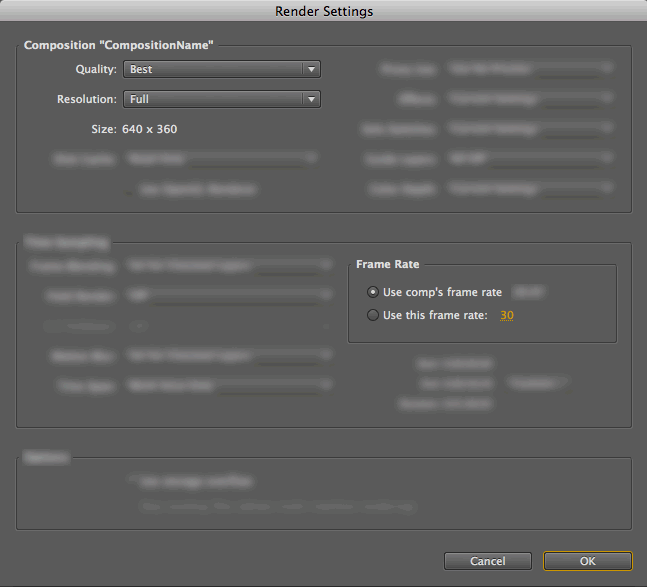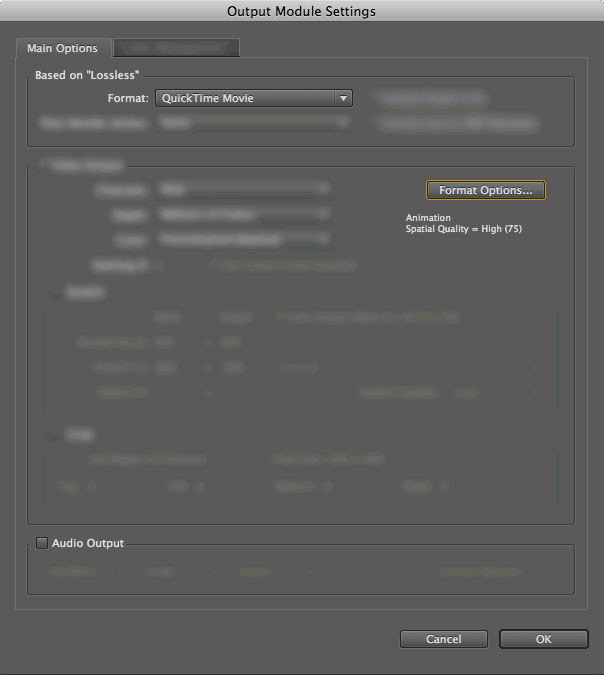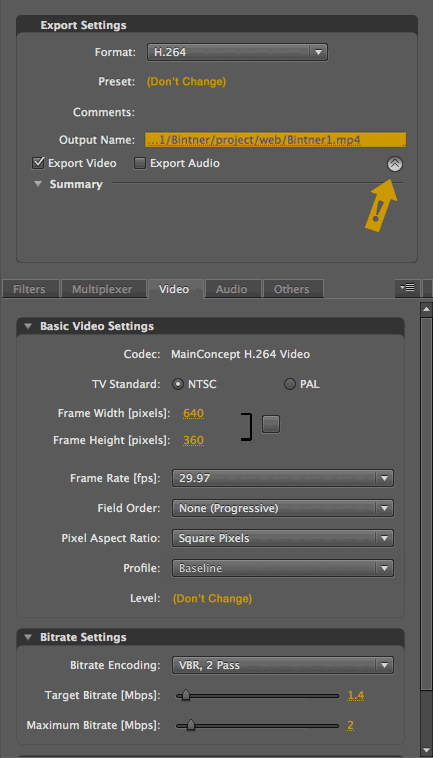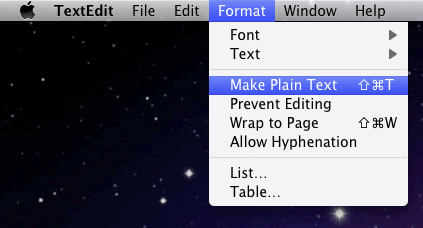Resources:
Syllabus / Section 3
COMD-411 - After Effects
Mondays, 3:30pm - 6:20pm
Engineering Building, Room 215A
Instructor
Eric Bintner
248-410-8468
Bulletin Description
COMD 411 - After Effects, This course is designed to give each student a thorough working knowledge of animation techniques using Adobe After Effects software. Students will develop the ability to visualize time based animated narrative / non-narrative work. Proficiency in this program requires a familiarity of other Adobe products such as Illustrator and Photoshop.
Detailed Description
The field of motion graphics is one of the most exciting areas of practice in graphic design today, made popular by the work of Saul Bass in the 1950s and the birth of MTV in the '80s to the use of new technologies and media artists in the '90s and 2000s. The release of Adobe After Effects has democratized a once specialized field of media production to those who have little to no experience in animation.
Motion graphic artists concept and design animated works for music videos, show packaging, television commercials, film title design, and more. They also work with 3D animators, film directors, sound designers and video editors - sometimes taking on these tasks on their own - to create a diversified experience.
Course Goals
This class will emphasize the mastery of a process to promote technical fluency. Though your career may not be in the direction of becoming and animator, it is important for each student to develop an understanding of the animation process and accompanying skill sets. Along with completing assignments, class members are encouraged to communicate with each other outside of class via electronic means, email, IM, FB... This can include, but not be exclusive to problems, solutions, information, etc. The benefits of developing a network within your area of design cannot be over done.
Critique
Each of the projects will conclude with a discussion and viewing of the finished work. Students are expected to present their completed projects to the whole class. Students are expected to vocally participate in the discussions of each project presented. It is understood in the critique environment that the author of the work listen to other's interpretation's and feedback prior to explaining their intentions. This is to promote an unguided and more accurate interpretation by your peers and encourage a heightened awareness of intentionality from the author.
Student Learning Objectives
By the end of semester, students will be able to independently create motion projects from concept phase to the final product with technical fluency.
Prerequisites
COMD-211
Required Supplies
- An 8½x11 bound journal/sketchbook. It should be dedicated entirely to this class. Projects and assignments (unless otherwise stated by the instructor) will not be accepted unless accompanied with said journal or sketchbook.
- 1 DVD-Rs for submission of assignments and projects at the end of the semester.
- Appropriate media (jump drives, external drive, etc) for backing up data.
Note: Students will be solely responsible for making backup copies of ALL their data. This is important! Accidents do occur and you will be held to all deadlines regardless. Save now, save often and make LOTS of backups.
Recommended Books & Supplies
- 4GB USB drive
- Monthly subscription to Lynda.com ~ very thorough tutorials, highly recommended
- Some projects may require the purchase of additional supplies as needed on an individual basis.
Grading
This is a studio course and WILL require work beyond the scheduled class period. Computer lab hours will be posted.
Grading Formula:
60% Assignments (90pts each - total points from the 4 individual assignments)
30% Final Project (180pts)
10% Participation (60pts - active class participation, especially during critiques)
Individual Grade Expectations:
A (4.00): Outstanding work. Outstanding achievement relative to the level necessary to meet course requirements. Performance was of the highest level. Excellence while meeting course objectives was sustained throughout the course. Not only was the student’s performance clearly and significantly above satisfactory, it was also of an independent and creative nature.
A- (3.70): Excellent work. Excellent achievement relative to the level necessary to meet course requirements. Performance was clearly and significantly above satisfactory, and was creative and independent.
B+ (3.30): Near excellent work. Achievement was significantly above the level necessary to meet course requirements. Performance was clearly and significantly above satisfactory, and was creative and independent.
B (3.00): Very good work. Achievement significantly above the level necessary to meet course requirements. Performance was very good, although not of the highest level. Performance was clearly and significantly above satisfactory fulfillment of course requirements (For undergraduates: B = meritorious: For graduates B = adequate).
B- (2.70): Good work. Achievement at a level just above that necessary to meet course requirements. Performance was notable.
C+ (2.30): Slightly above satisfactory work. Achievement that meets the course requirements. Performance was slightly more than adequate.
C (2.00): Satisfactory work. Achievement that meets the course requirements. Performance was adequate, although marginal in quality (For undergraduates: C = adequate: For graduates: C = inadequate).
C- (1.70): Slightly below satisfactory work. Achievement that barely meets the course requirements. Performance has been slightly below satisfactory and was marginal in quality.
D+ (1.30): Passing work. Achievement below satisfactory in meeting course requirements. Student demonstrated below satisfactory achievement in meeting course objectives, yet fulfilled a sufficient enough portion of the course objectives that repeating the course is not necessary unless required by the academic unit.
D (1.00): Minimum passing work. Achievement barely worthy of credit. Student demonstrated unsatisfactory achievement in meeting course objectives, yet fulfilled a sufficient enough portion of the course objectives that repeating the course is not necessary unless required by the academic unit.
F (0.00): Failed – no credit. A failure to meet course requirements. The work of course objectives were either: 1) completed but not at a level of achievement that is worthy of credit, or 2) have not been completed and there was no agreement between the instructor and the student that the student would be awarded an “I” (incomplete).
Failure to meet assignment and project deadlines will result in lowered grades. For each class day the assignment is overdue, its grade will be lowered one full letter. Documentation of your progress MUST be reflected in your submission pages or it will not count as finished!
Only ONE assignment can be reworked one time after critique and turned in to the instructor for a better grade. All LATE and reworked assignments must be turned in no later than the last day of class before finals week. NO WORK WILL BE ACCEPTED AFTER THE LAST DAY OF CLASS. You will also be required to submit all semester work on a CD/DVD by the class' FINAL day in finals week. Failure to submit this CD/DVD of work will result in failure of the class.
Special considerations will NOT be given to students on the basis of technical difficulties, if alternative solutions were not actively pursued. Students are expected to use their time and energies wisely.
Attendance
Attendance at ALL class sessions is mandatory for successful completion of this course. You are responsible for all material presented in class and it is important that you do not miss any classes! Students are expected to come to class on time, ready to work with all necessary supplies and materials. Three or more unexcused absences will result in the lowering of the student's final grade one full letter grade for each additional day missed. Only the following would be considered an excused absence:
- Participation in University-sanctioned activities and programs
- Personal illness with a doctor's note indicating that the student needed to stay home on that particular class day
- Family and/or other compelling circumstances
Instructors have the right to request documentation verifying the basis of any absences resulting from the above factors. Do not ask the instructor if it is all right to miss a class for any other reason. An excused absence does not excuse the student from making up class time missed in a timely manner. Attendance will be taken daily and arriving to Lecture/Lab component 30 minutes late and/or leaving more that 30 minutes early will be recorded and counts as one-half of an unexcused absence. Signing in for any other student will result in a failing grade.
NOTE: Attendance for all critiques is required. Attendance for finals critique is mandatory - anyone missing critiques during the scheduled finals will fail the class, no exceptions. Finals will be held the last week of class.
Calendar / Section 3
Projects / Section 3
Student Work / Section 3
Eric Bintner
ebintn15@pratt.edu
In alphabetical order, Eric is an animator, artist, designer,
developer and musician. He is a graduate of Missouri State University,
BFA 2005, and Cranbrook Academy of Art, MFA 2007.
Originally from Kansas City, Eric has worked for the past
three years as a freelance motion graphics designer and
interactive developer in New York. His client list
includes Macys.com, The Rockefeller Group, Cushman &
Wakefield and Opie & Anthony. In the fall of 2010 he moved to Missouri for five months
to teach Animation and Digital Arts at Missouri State.








